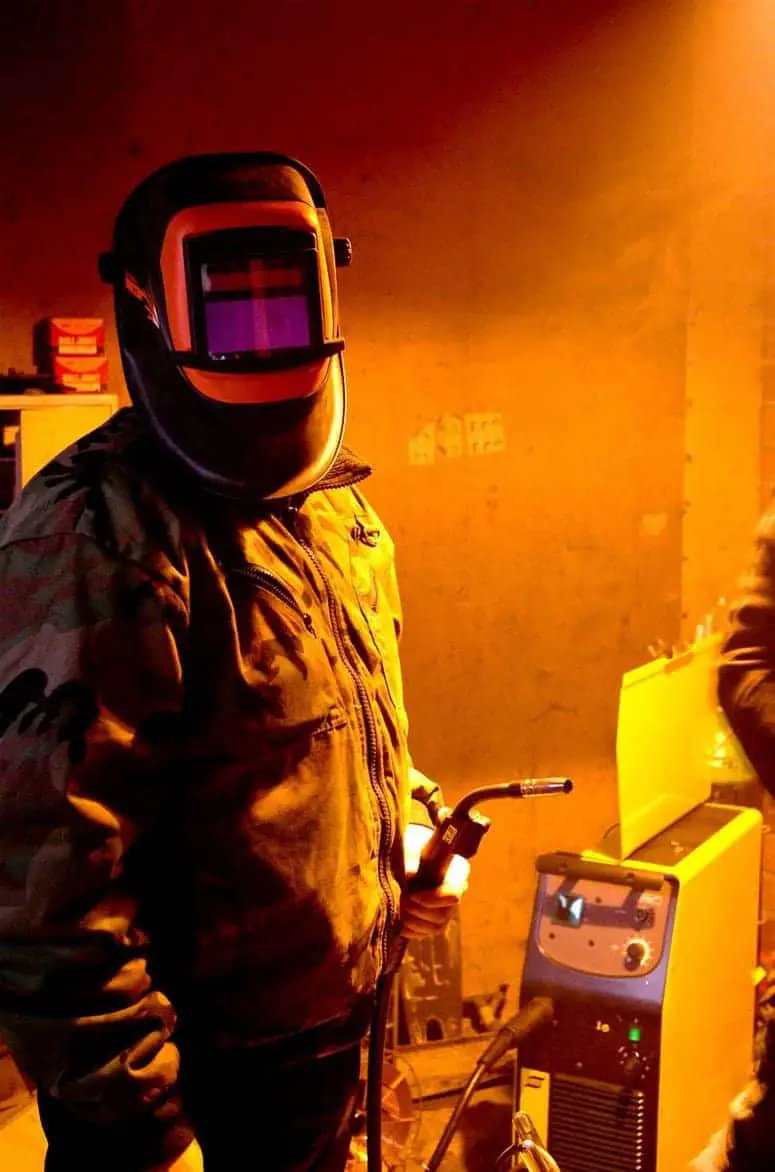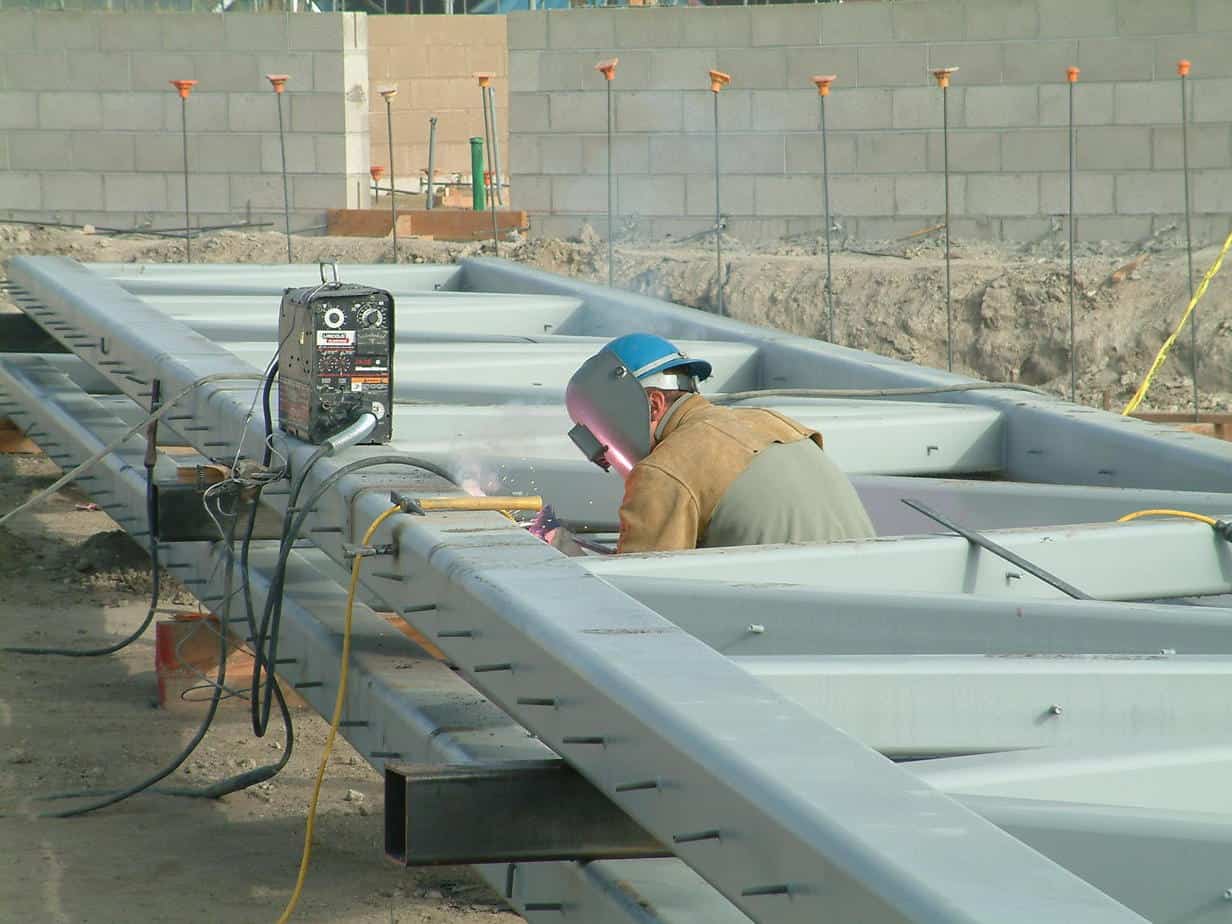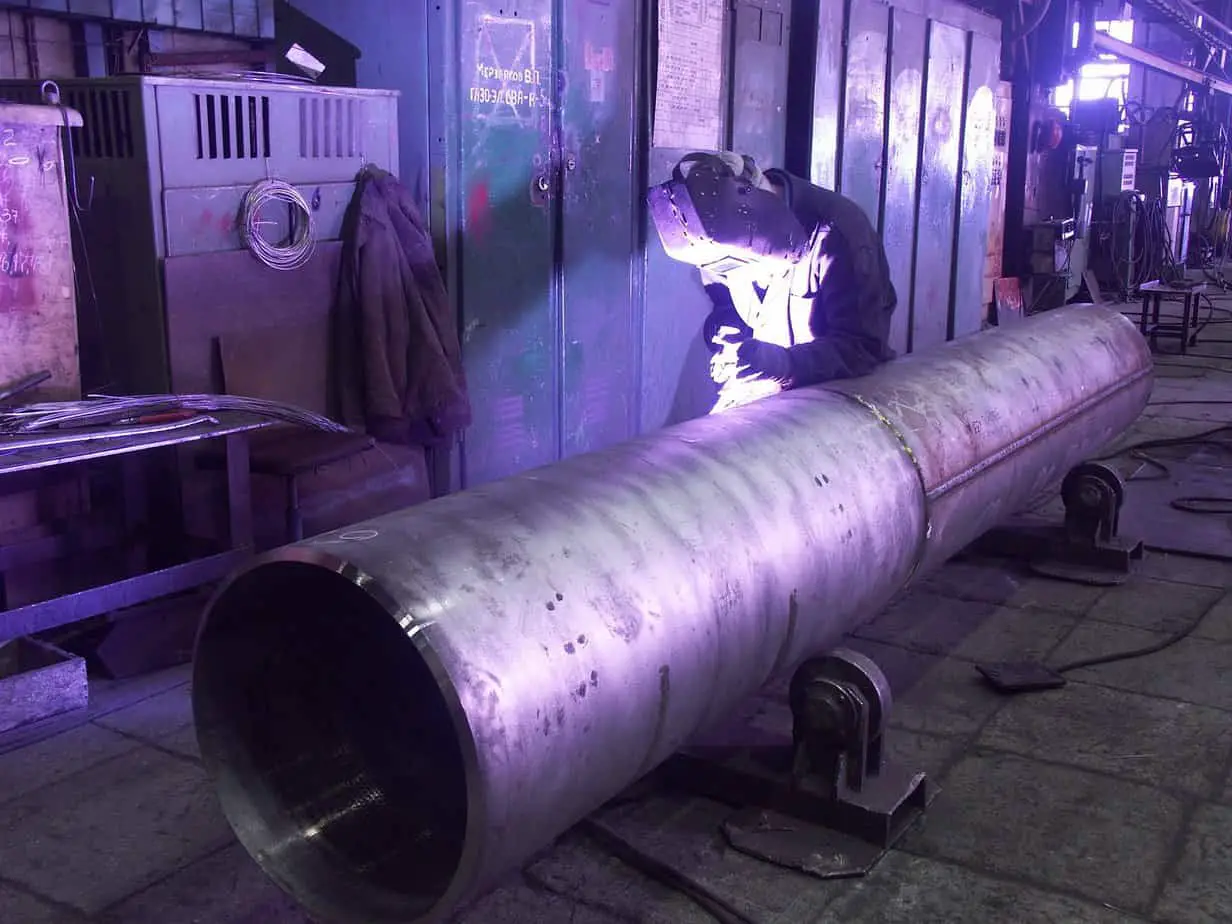Welding is an incredibly necessary job for the entire country. But those who perform the regular maintenance and construction required for modern life must also be aware of standard welding hazards and learn how to prevent them from affecting their work or physical well-being.
Welding is an inherently dangerous prospect in some regards. After all, super hot temperatures are used to fuse different types of metal together! In this guide, we’ll go over all the major welding hazards welders will face during a day on the job and how do avoid them properly.
Why is Welding Safety Important?
The key to a good welding job is always safety. In fact, safety is arguably the biggest factor when it comes to welding performance and consistency. It doesn’t matter how fast you work if you don’t weld safely enough to prevent injury to yourself and others.
Welding safety is crucial because it ensures that you’ll be able to come back and finish your work the next day. Your fellow welders also won’t be put in harm from your efforts.
At the same time, welding safety help to make sure that your welding projects are finished properly and won’t cause safety issues for anyone who uses the building, road, or vehicle in the future.
What, in General, Are the Hazards Associated with Welding?
There are 10 main hazard categories when it comes to welding. Virtually every possible danger or issue you might encounter can be categorized beneath these categories. Understanding the main hazard categories will help you practice good safety procedures and know what to do in the event of an accident or safety emergency.
Physical Welding Hazards
First and foremost, all welders need to be aware of physical hazards they might encounter during their job. This includes not only general hazards from welding torches but also environmental concerns. Welding worksites are often buildings or vehicles under construction, which means that there’s often lots of exposed or sharp metal and low overhead beams lying around.
Keeping yourself safe from physical welding threats often focuses on paying attention to your environment and always wearing protective gear. This can include wearing a hard hat if you’re in a construction site.
Alternatively, it can mean not wearing a welding helmet if it obstructs your vision as you walk around. You should also practice keeping your tools and gear in a safe location so they don’t fall and accidentally trigger or hit someone.
Electric Shock
While welding techniques usually work with low-voltage, the danger of electric shock is still present. Environmental conditions, like cramped or wet spaces, can exacerbate this effect and make the likelihood of a shock even greater.
As a result, you should always wear dry gloves to protect yourself against electric shocks. In addition, all welders should wear rubber sole shoes and also have an additional insulating layer like a dry board or rubber mat on surfaces that might conduct electricity.
Furthermore, all pieces being welded and the frames of any electrically powered machines should be grounded at all times. Make sure to keep the insulation for electrode holders and all electrical cables dry and in good condition.
Fumes and Gases
All welding activities produce a signature “smoke” that is actually a combination of fine particles or fumes and ambient gases. Welding smoke often has small amounts of various particles like chromium, nickel, asbestos, arsenic, beryllium, and much more. Even argon poisoning is possible. All of these substances can be extremely toxic if inhaled.
Welding fumes come from the base material being welded or the filler material, as well as any coatings or paints on the metal being welded at the time. Shielding gases and chemical reactions can also add to the fumes or gaseous mixes.
The individual particles inside welding smoke can affect many parts of your body, including your lungs, heart, kidney, and even your central nervous system. All welders are at risk, although welders who smoke are disproportionately so.
Short-term and long-term health effects are possible. One example is metal fume fever, which can occur between 4 and 12 hours after exposure and which is accompanied by typical fever symptoms and a metallic taste in the mouth.
Avoid these side effects and more by always wearing breathing gear if you weld in a confined environment. This includes a respirator system and an oxygen supply. While this is costly, it’s nothing compared to the cost of your health if you weld without respiratory gear in a confined space. Look for the best welding respirators to protect yourself; your health is worth it!
Fire and Explosions
Welding necessarily happens around intense heat and often produces bright sparks. As a result, welding can easily accidentally cause a fire or explosion if flammable or combustible materials are nearby.
To that end, all welding and cutting should be performed in areas that don’t have flammable or combustible materials like liquids or gases. You should also avoid welding on containers that have flammable materials unless the container has been thoroughly cleaned beforehand.
Additionally, it’s a good idea to perform a fire inspection before you leave a work area or around 30 minutes after your job is finished. Finally, always have a fire extinguisher nearby in case of a sudden blaze.
Burns and Eye Damage
Welding eyes burn as easily as any others when exposed to harsh light. To protect welders’ eyes, special goggles and headgear were developed to block most harmful light. This is why most seek out top-rated welding glasses before they head to work.
Invisible ultraviolet light from the arc flash can cause “arc eye” or “welder’s flash” if you don’t wear that protective headgear. This condition usually feels like sand or grit in your eye and may be accompanied by blurred vision and intense pain. This can occur even after exposure for less than one minute. So you should always wear polarized glasses or a mask to protect your retinas from the intense radiation, like the model we presented in our Miller welding glasses review.
You can even get these side effects if you are exposed to light that reflects off nearby metallic surfaces. So everyone on a worksite must follow good eye-protective practices to ensure that everyone is safe.
Do yourself a favor and find a quality welding helmet before you go to work. The best welding lens reviews will also help you find the right stuff to protect your eyes.
Similarly, you should prevent your skin from being exposed to intense ultraviolet light. Failing to do this can result in burns that are similar to sunburn damage. This will increase your risk of skin cancer. You only need a few moments of exposure to get these kinds of issues.
Exposure to UV and IR Radiation
Arc welding produces intense light that can cause damage to the retina of your eyes. Even worse than the above conditions, long-term exposure to these types of radiation can increase your risk for cancer and can even increase your risk for blindness over time.
Whenever you weld, particularly in a confined or dark environment, you must wear polarized goggles for a mask and keep all of your skin covered by protective gear. Make sure that the gear is properly certified and can withstand the radiation above. Simple cloth doesn’t always do the trick.
Chemical Exposure
Performing welding work around chemicals or on metal surfaces that previously had chemicals, like paint, can become toxic to the worker. That's because the resulting fumes produced by the welding process can turn those chemicals into inhalable particles that can poison the body.
Chemical exposure is incredibly serious and must always be protected against. You should always prepare your welding surfaces before you take a torch to the metal. Clean all metal surfaces carefully.
In addition, your worksite should not have any chemical leaks from exhaust pipes or industrial sources. If your worksite is unsafe, file a complaint or refuse to work because even short-term chemical exposure can be extremely serious, if not outright deadly.
Injuries From Insufficient PPE
All welders should only purchase personal protective equipment that is safety rated and which can do the job that is advertised. Don't waste time or money on subpar protective gear, as you might head to your worksite thinking you're safe only to find fresh injuries as a result of poorly-made goggles or coats.
No matter where you work, you should always have:
- protective eyewear
- protective clothing
- hearing protection
- respirators if welding in a confined environment
Noise Hazards
Arc welding is often loud and many welding worksites are located in busy and noisy environments. Too much noise can increase your stress and blood pressure and can permanently damage your hearing. You should avoid working in an overly noisy area.
See if your work site adheres to the OSHA Noise Standard, which requires that your employer continuously test for noise levels. Your noise exposure shouldn’t exceed 85 dB over eight hours. Otherwise, you must have free hearing protection and attend annual hearing tests. It’s a good idea to have your plugs on hand, anyway.
Welding Safety Checklists
When welding, it’s often helpful to go through safety checklists for both your personal equipment and your worksite in general. Double-check to make sure all your tools are working properly before getting to work. Have a buddy or coworker check your gear to make sure things are secured before you light the torch.
Receive Appropriate Training
Everyone must receive appropriate safety training before heading to work. Knowledge is power in this case, and someone who doesn’t know how to avoid welding accidents is more likely to cause them. All welders on a worksite should be properly certified and regular training seminars or classes should be offered to shore up any weaknesses.
Ensure Your Workspace is Well Ventilated and Free of Flammable Material
In addition, welders concerned about safety should make sure that their workspaces are well ventilated and don’t have any flammable materials. This includes ambient flammable materials and potential substances on welding surfaces or behind welding walls.
Take a few minutes at the beginning and end of your shift to make sure the above two factors are taken care of before starting work or heading home. The result will be a better and safer workspace for everyone.
FAQs
1. Why is welding a dangerous job?
Since welding involves the fusion of metals and, on occasion, the inclusion of filler metals to strengthen the weld, the emission of toxic gases is a possibility. Hexavalent chromium and manganese produce the most hazardous gases. If oxygen or water enters the pool, it can decrease the weld's quality.
2. What dangers do welders face?
Hazards to Welding Safety.
- Shock with electricity. Arc welding is a procedure that utilizes live electrical circuits to create a pool of molten metal.
- Noise-related hazards.
- Exposure to ultraviolet and infrared radiation.
- Experimentation with Fumes and Gases.
- Burns.
3. Can welding kill you?
While it is possible to get shocked while welding, particularly in moist conditions, this is more often than not caused by defective equipment or carelessness. Due to the low voltages involved, a welding unit poses a lower risk of death than a standard power outlet. (Note that the term "electrocuted" refers to being "killed by electricity," not to be shocked.)
4. What are the safety practices in welding?
The appropriate PPE—protective clothing, gloves, welding helmets, and respiratory protection—is covered in both 1910.252(b)(3), which requires employees performing welding, cutting, or brazing jobs to wear protective equipment, and 1910.132, the OSHA general PPE standard.
5. What should a welder wear?
The appropriate PPE—protective clothing, gloves, welding helmets, and respiratory protection—is covered in both 1910.252(b)(3), which requires employees performing welding, cutting, or brazing jobs to wear protective equipment, and 1910.132, the OSHA general PPE standard.





